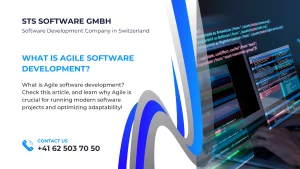In the contemporary digital era, characterized by rapid technological advancements, the development of enterprise applications emerges as a pivotal element for businesses aiming to maintain their competitiveness and provide unparalleled user experiences. Nevertheless, within the realm of innovation, the prudent management of development budgets takes center stage. This comprehensive exploration navigates through the intricate landscape of cost optimization within enterprise application development, shedding light on a spectrum of strategies and methodologies crafted to streamline financial resources without compromising the excellence and caliber of the end product.
I. Introduction to Enterprise Application Development Budget Optimization
In the dynamic and fast-paced arena of enterprise application development, striking the right equilibrium between fostering innovation and adhering to budgetary limitations stands as a pivotal challenge. This piece aims to delve into the multifaceted significance of implementing robust cost management strategies, offering insights into their pivotal role in successfully navigating this complex landscape.
Enterprise application development encompasses the creation and deployment of software solutions tailored specifically to meet the diverse and intricate needs of large-scale organizations. Within this sphere, the pursuit of innovation is ceaseless, driven by the ever-evolving technological landscape and the constant demand for enhanced functionality, efficiency, and user experience. However, this pursuit must coexist harmoniously with the pragmatic consideration of financial boundaries and constraints that dictate the allocation of resources.
The evolving nature of technology, coupled with the escalating expectations of end-users, often necessitates a substantial investment in development efforts. Consequently, this can create a challenging dichotomy wherein the aspiration for groundbreaking advancements contends with the practical necessity of adhering to a predefined budget. Herein lies the crux of the issue: how to optimize the development process to deliver cutting-edge solutions while ensuring fiscal responsibility. The article explores the significance of robust cost management strategies to navigate this landscape effectively.
II. Factors Influencing Enterprise Application Development Costs
A. Scope Definition and Project Requirements
Factors that impact the costs of developing enterprise applications encompass various facets. One of the pivotal elements is the intricate interplay between scope definition and project requirements. Establishing a clear and comprehensive delineation of the project scope, coupled with meticulous documentation of its requirements, serves as the foundational pillar for cost-effective development. This initial phase acts as a safeguard against scope creep, which can lead to uncontrolled expansion of project objectives beyond the initial plan, consequently inflating both time and financial resources.
Scope definition entails outlining the boundaries, objectives, deliverables, and constraints of the project. It is a meticulous process that involves engaging stakeholders, understanding their needs, and synthesizing these insights into a detailed scope document. This document serves as a roadmap, guiding the development team throughout the project lifecycle and ensuring alignment with the envisioned goals.
Simultaneously, documenting project requirements is equally critical. This involves identifying and articulating the specific functionalities, features, and performance benchmarks expected from the enterprise application. Detailed requirements documentation mitigates ambiguities, reduces misunderstandings, and provides a clear understanding of what needs to be achieved. It aids in streamlining the development process by offering a blueprint for the development team to follow, minimizing unnecessary iterations and rework.
The synergy between scope definition and requirements documentation lies in their ability to mitigate risks associated with unclear objectives or evolving client needs. When these foundational aspects are inadequately addressed, it often results in scope creep – a phenomenon where project objectives expand uncontrollably, surpassing the initially agreed-upon boundaries. Scope creep not only disrupts the project timeline but also leads to budget overruns as additional resources and efforts are allocated to accommodate the expanded scope. Therefore, a robust understanding and documentation of project scope and requirements are indispensable to maintain cost-effectiveness throughout the development lifecycle.
Moreover, beyond the initial phase, changes in project scope or requirements can significantly impact development costs. Even minor alterations in requirements or unexpected shifts in project objectives during the development phase can lead to considerable rework, causing budget escalations. Thus, proactive management of changes, through structured change control processes and effective communication among stakeholders, becomes imperative to mitigate cost escalations arising from mid-project alterations.
B. Technology Stack and Development Tools
When it comes to enterprise application development, the technology stack and choice of development tools wield immense influence over project costs. The selection of a technology stack lays the foundation for the entire project, encompassing various components such as programming languages, frameworks, databases, and more. This decision significantly impacts not only the initial development phase but also the scalability, maintenance, and overall lifecycle costs of the application.
A strategic approach to choosing the technology stack involves assessing multiple facets. Firstly, the compatibility of the stack with the specific requirements of the application plays a pivotal role. An in-depth understanding of the project’s functional and non-functional requirements helps in pinpointing the most suitable technologies that align with the goals and scope of the application. For instance, an application requiring real-time data processing might benefit from a technology stack optimized for high-speed data handling, while an e-commerce platform might prioritize scalability and security.
Moreover, the availability of skilled developers proficient in the chosen technology stack is another crucial consideration. Opting for widely adopted and well-supported technologies can ease the recruitment process, reduce training overheads, and ensure a larger pool of resources available for maintenance and future updates.
Furthermore, the cost of licensing or acquiring necessary tools and frameworks contributes significantly to the overall project budget. Open-source technologies often provide a cost-effective alternative without compromising quality, enabling businesses to allocate resources more efficiently. However, it’s essential to weigh the advantages and limitations of open-source solutions against proprietary ones, considering factors such as support, security, and customization options.
The efficiency and productivity of development teams also hinge on the choice of development tools. Integrated Development Environments (IDEs), debugging tools, version control systems, and project management software all play integral roles in streamlining the development process. Investing in robust and user-friendly tools enhances collaboration, accelerates development cycles, and minimizes errors, thereby positively impacting both the timeline and budget of the project.
In addition to upfront costs, long-term considerations must be factored in while selecting the technology stack. The scalability and future-proofing of the chosen technologies are critical to accommodate potential growth and evolving business needs. Choosing technologies with strong community support and a roadmap for updates and improvements ensures the application remains adaptable to emerging trends and technological advancements, mitigating the risk of obsolescence and reducing overall total cost of ownership (TCO).
C. Development Team and Resource Allocation
In the realm of enterprise application development, the allocation of budgets is a critical facet that intricately weaves together various factors, ultimately influencing the trajectory of a project. Among these influential elements, the configuration and composition of the development team stand as a cornerstone, profoundly impacting the overall cost and success of the endeavor.
When delving into the factors influencing enterprise application development costs, the intricate interplay of the development team and resource allocation emerges as a pivotal focal point. The selection and composition of the development team carry substantial weight in determining the project’s outcome. An adept team comprising skilled professionals versed in diverse areas such as software engineering, user experience design, quality assurance, and project management can significantly elevate the efficiency and quality of the development process. Conversely, an inadequately assembled or under-resourced team might impede progress, resulting in subpar outcomes and potential budget overruns.
Resource allocation within the development team extends beyond the mere assignment of personnel. It encompasses the provisioning of essential tools, technology infrastructure, and adequate time allocation for each phase of the development lifecycle. Comprehensive resource allocation entails a judicious balance between human resources, technological infrastructure, and project timelines. The allocation of resources must be aligned with the project scope, ensuring that the team possesses the requisite tools and support to navigate complexities and deliver within stipulated timelines.
An aspect closely intertwined with resource allocation is skill diversity within the development team. A team comprising members with a varied skill set not only fosters innovation but also ensures a comprehensive approach to problem-solving. However, assembling such a team necessitates prudent budget allocation to recruit and retain professionals with diverse expertise, which can notably impact the overall project costs.
Moreover, the geographic distribution of the development team can significantly influence budget considerations. Leveraging a globally dispersed team, tapping into talent pools from diverse locations, often offers cost advantages. Offshore or distributed teams can provide access to skilled professionals at a reduced cost compared to onshore resources. However, managing a geographically dispersed team demands strategic planning and effective communication frameworks to mitigate challenges arising from time zone differences, cultural disparities, and potential language barriers.
Furthermore, the complexity of the enterprise application under development stands as a crucial determinant in resource allocation and subsequently, budgetary considerations. Highly intricate applications with multifaceted functionalities often necessitate a larger and more specialized development team, augmented resources, and extended timelines. Simultaneously, simpler applications might require a leaner team and fewer resources, impacting budget allocations accordingly.
The utilization of technological frameworks, tools, and methodologies also shapes budgetary aspects in enterprise application development. Adopting cutting-edge technologies and frameworks might incur higher initial costs but can potentially yield long-term benefits such as scalability, performance optimization, and future-proofing the application. Conversely, reliance on outdated technologies or inefficient development methodologies can lead to increased maintenance costs, technical debt, and eventual budget overruns.
Moreover, regulatory compliance and security requirements significantly influence budget allocations in enterprise application development. Ensuring adherence to stringent regulatory standards and implementing robust security measures demand additional investments in specialized expertise, compliance audits, and security frameworks. Failing to allocate adequate resources to address these aspects might not only jeopardize the project’s success but also lead to substantial financial implications due to non-compliance or security breaches.
The project management approach adopted also plays a pivotal role in budgetary considerations. Agile methodologies, characterized by iterative development and adaptive planning, might necessitate a more flexible budgeting approach compared to traditional waterfall models. Agile frameworks often accommodate changes in project scope and requirements, thereby requiring a more dynamic allocation of resources and finances throughout the development lifecycle.
D. Project Management and Methodologies
When contemplating the development of enterprise applications, the methodology chosen can have far-reaching consequences on the overall expenses. Agile methodology, known for its iterative and flexible approach, often requires frequent collaboration and adaptability throughout the development process. This flexibility can impact costs as it allows for continuous adjustments and refinements based on evolving requirements and feedback. Conversely, the Waterfall methodology follows a more linear and structured path, with distinct phases such as requirement gathering, design, implementation, testing, and deployment. While this approach may seem more rigid, it can provide a clearer roadmap and minimize potential changes mid-process, potentially affecting the overall cost structure.
Moreover, the choice between these methodologies extends beyond their immediate application phases. Factors like resource allocation, project timelines, and risk management also differ significantly between Agile and Waterfall. Agile’s emphasis on adaptive planning and rapid iterations can affect resource allocation by necessitating a more dynamic allocation of personnel and resources throughout the project lifecycle. On the other hand, Waterfall’s phased structure may allow for more straightforward resource planning and allocation at the outset, potentially impacting costs related to staffing and resource utilization.
Furthermore, project timelines are influenced differently by these methodologies. Agile’s iterative nature often results in shorter development cycles, allowing for quicker iterations and potentially faster time-to-market. However, this pace might also introduce higher management costs due to more frequent reviews and changes. In contrast, Waterfall’s sequential nature can result in longer development timelines, potentially impacting time-to-market negatively but with a more predictable cost structure.
Risk management strategies also diverge between Agile and Waterfall methodologies. Agile’s iterative approach enables ongoing risk assessment and mitigation throughout the project, potentially minimizing risks associated with changes in requirements or market dynamics. This adaptability, while beneficial, can also lead to increased costs stemming from the need for continuous risk monitoring and adjustments. Conversely, the Waterfall methodology’s structured approach may limit immediate adaptability but can establish clearer risk management strategies at each phase, potentially impacting costs related to risk assessment and mitigation differently.
Furthermore, the intricacies of project management within each methodology can significantly influence costs. Agile’s emphasis on collaboration and frequent communication may require additional tools and resources for effective team coordination, potentially impacting costs related to project management software or team facilitation. Conversely, Waterfall’s more structured and hierarchical approach may necessitate fewer management tools but might incur higher costs related to comprehensive documentation and compliance with each phase’s requirements.
Ultimately, while both Agile and Waterfall methodologies have their unique advantages and disadvantages, understanding their nuanced implications is critical in determining enterprise application development costs. Factors such as adaptability, resource allocation, project timelines, risk management, and project management intricacies play significant roles in influencing these costs. Thus, a thorough assessment of the specific project requirements and objectives is essential in making an informed decision regarding the most suitable methodology, thereby effectively managing and optimizing enterprise application development costs.



